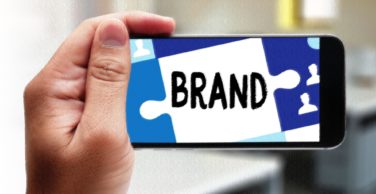Last we spoke, executing omnichannel digital media using programmatic as the foundation was the topic. But we cannot talk about the media channels and how to connect them without talking about the creative. It has an outsized impact on your media plans’ performance and we need it to drive success.
According to Ipsos, 75% of campaign success is driven by the creative. Given this impact, we need to ask ourselves two important questions:
- Are we making the right creative for our campaigns?
- Are we measuring the creative appropriately?
Let’s address the first question. We’ve all heard the adage, “The right message to the right person at the right time,” but how many of us are executing media this way? Serving good creative at the wrong time to the wrong person makes it bad creative. So does serving it too many times to the right person. As you build media campaigns, consider the following six components.
What to Consider When Forming Your Creative Strategy
1. Creative Fatigue and Frequency: This occurs when audiences are overexposed to a creative campaign. Identifying the ideal frequency (number of times an ad is served) is critical to driving performance. When frequencies are too high, they have a negative impact on brand perception.
2. Different Creative Types: As an industry, we make a lot of flat display creative. Why? Video, native, search extensions, and rich media are all formats that perform better. Different creative formats do different things. Video is much better at driving brand awareness—why are we using display media as the foundation of go-to-market and brand launch campaigns? Also, why are our videos so long? The average video view time is 6 seconds, but we are making 90-second videos to include important safety information (ISI)—our audiences aren’t getting there!
- If you create 90-second videos for Connected TV (CTV) or Over-the-Top TV (OTT) commercials, you’re driving your costs 3x higher without a positive impact on performance. The commercials are sold in 30-second pods—you need to buy three for a 90-second ad (which also has limited availability), driving costs from a $15 to $45 cost per thousand (CPM) each time the ad is served.
3. How to Avoid Creative Fatigue: It’s simple!
- Consider developing more ad iterations—you can leverage search copy to create native and search extension ads. With so many iterations of search ads, it’s an easy path to expanding creative quickly (and the messages are already approved by legal).
- Rotate your creative by swapping it out on a weekly or biweekly basis.
- Fatigue occurs on average after less than 40 ad impressions—for most of our creative, we are fatigued after one month in market!
4. Creative Messaging: Remember when we talked about omnichannel media? Layering on sequenced messaging really supercharges an omnichannel approach. By running your CTV/OTT and Addressable (cable TV) programmatically, you know who has seen your ads and how many times (frequency). That information allows you to align messaging with the channel location and sequence to make it a powerful tool for driving new patient starts and script lift.
5. Leveraging Partners to Reduce Costs: If we are saying we need a lot more creative, how do we pay for it? Well, sometimes, you don’t have to pay. Some partners in video, gaming, native, rich media, audio, and search extensions will make free creative. The service requires an associated media spend, but you’re already spending—why not do it more effectively? Being relatively new to pharma, I have found the creative costs shocking. We pay a lot for the least effective creative type which fatigues after a month—there must be a better way!
6. Creative Best Practices:
- Patients prefer unbranded media; they care about their condition and how to treat it. Your brand is secondary.
- HCPs prefer branded and will watch longer videos for educational purposes.
- Align the creative to the people you are most likely to reach in the channel. For example, Black and LatinX communities watch significantly more television and listen to more audio (traditional and streaming radio) than other groups. Along with the Asian community, non-white audiences are the most active on social media. Does your creative reflect this? Two columns ago, we talked about pharma’s DE&I problem—this is an example of how the lack of diversity has far-reaching impact.
Connecting Media and Creative
We should always strive for our media and creative to be connected. Executing media programmatically provides access to many of these vendors who make creative and help you optimize your performance without the commitment of a direct buy. You can test, optimize, and test again in a more streamlined fashion. And some high-performing creative is only available programmatically (e.g., search extensions).
According to Malcolm Halle, VP of Strategic Accounts at PulsePoint, this connectivity is one of the major advantages of executing media via programmatic. “We have fingertip access to real-time healthcare audience insights, allowing brands to make strategic marketing choices to help guide audiences during their most critical clinical decision-making moments.”
Halle went on to say, “Ultimately, different messages resonate more deeply with different people depending on where they are in the journey. For example, we may see that a message about a specific brand’s benefits is less likely to resonate with audiences exploring multiple symptoms simultaneously. The same messaging may be much more applicable to the audiences after they have begun to explore different therapy options to assess the potential impact of therapy.”
Full disclosure: I built my career in pharma betting on the PulsePoint platform and work closely with them in my consultancy. Each concept discussed or recommended, has been tested via PulsePoint’s LIFE platform.
Learning What to Measure
Another benefit of running omnichannel media programmatically, regardless of the platform you choose? The measurement! Which brings us to the other question: Are you measuring the creative appropriately? Probably not, because no one is. A video doesn’t do what display does which doesn’t do what search or social does. Do you have the same metrics for each creative type? Are you using attribution versus last click models?
For example, videos are usually watched so we don’t expect them to have significant click behavior like a search ad. It’s important to map key performance indicators (KPIs) to creative type and sales funnel location to set expectations appropriately. You know the old saying, “If you judge a fish by its ability to climb a tree, you will always find it lacking?” Same concept here folks!
Putting it All Together
Let’s revisit the previous columns—how is this all connected? Because the organizational structures in pharma do not recognize that digital marketers should have autonomy to manage digital end-to-end, we are often unable to implement digital media best practices or proven approaches. People’s behaviors are the same regardless of the industry trying to reach them and some of those people are non-white and should be represented in the creative, particularly in channels where they dominate usage and engagement. Running the media via programmatic allows us to connect channels into an omnichannel strategy (even traditional TV and radio) and serve creative and messaging that is more likely to connect with our highly segmented patient and HCP audiences to drive better performance.
That’s the gist y’all. It all works together and it works better when we stop fracturing processes across roles that are not digitally focused. The nicer we play together, the better our marketing will perform!










